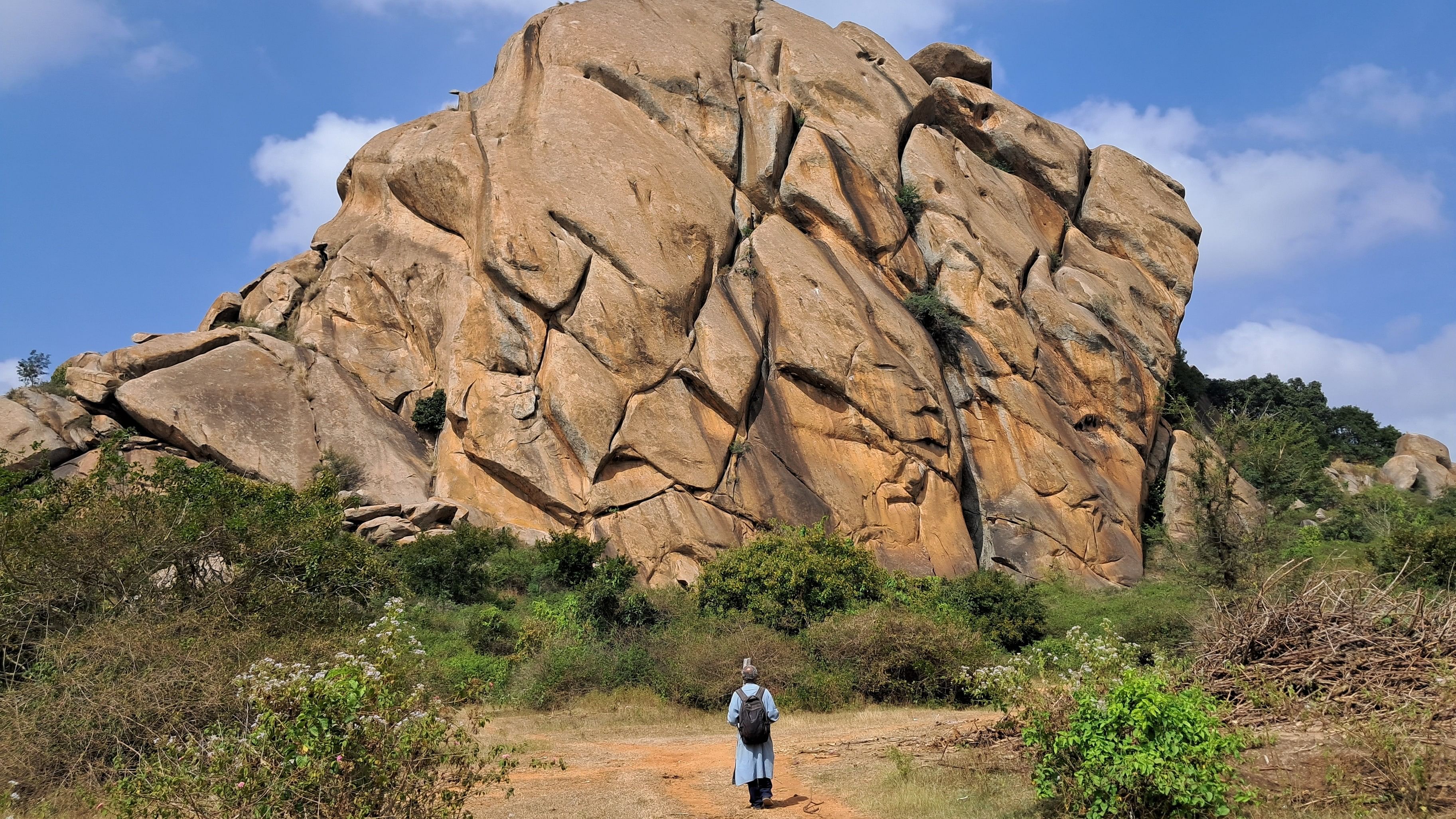
On my way towards Tumakuru by train, I would keep looking at a massive hill across the horizon, near Nidvanda station. It appeared as if someone had cemented diamond-shaped boulders of various sizes to make it look like a sitting lion. As per locals, that was the Heggunda hill where Rama’s sacrificial horse ‘Haya’ was tied to a sthambha, and so the village was earlier known as Hayagunda.
A search for Heggunda in the available archives led me to Epigraphia Carnatica Volume 9 and the Mysore Archaeological Survey (MAS), apart from other documents. EC9 gives details of two inscriptions dated 1115 AD and 1152 AD, the first one on a rock at the entrance to the Mallikarjuna cave temple on the hill and the second one inside the same temple. Both mention the grant of certain lands as ‘Deva daana’ to Mallikarjuna. As per MAS, the 1115 AD inscription mentions the village name as ‘Perkunda’, which corresponds to ‘Pergunda’ in Kannada, the old form of the modern Heggunda. An inscription dated 1366 AD, that I had seen on Shivagange hill, talks of ‘Heggunda’s Baira Dasa’s son, Maara Daasa’. This indicates that, by that time, ‘Pergunda’ had already become ‘Heggunda’.
These learnings readied the trekker in me for an exploratory journey. I took the passenger train to Dobbspet station and a bus to Heggunda cross. Walking towards the hill, I passed the Shri Hale Ooru Anjaneya Swamy Devalaya before climbing up the ancient steps between boulders to reach the cave temple of Mallikarjuna Swamy.
At its entrance, I noticed an inscription in ancient Tamil. Sadly, it was painted white, though the script was visible. The natural cave had recently been fortified with a grill. I was able to look at the nandi in front of the deity and could see the stone slab mentioned in MAS that has ‘a seated male figure with folded hands with a chauri-bearer standing at the side’. The inscription on this stone is dated 1152 AD. Higher up was the second cave temple of Sri Veerabhadra Swami which also has a stone depicting ritualistic offerings by two male figures. Thorny bushes and boulders blocked my passage to go further up.
While coming down, I saw a recently painted arrow mark pointing towards another temple ‘Sri Adhidevate Kukkalamma Devi’. It was not a temple, but the image of a goddess etched on a big boulder. The goddess standing on the head of a buffalo is clearly Durga as Mahishasura Mardini. It is baffling that this image is very similar to the two Durga panels at Mahabalipuram, which date back to the reign of the Pallavas. One of them, an image of a four-armed Durga at cave 10 at Mahabalipuram, has the image of a devotee cutting off his own head as a sacrifice. The same is depicted in the image of Durga at Heggunda hill.
Fascinating hill face
From there, as I walked to the village, I could see the hill face from close quarters. It was fascinating to look up at the magnificent rhombus-shaped boulders. On the other side of the foothill was an ancient temple of Devi Matha. I could see the walls of an old fort beyond the huge trees. The trail uphill led me to the entrance of the fort. When I took the right-side path, I observed an ancient carving of Hanuman. On the slightly steeper slopes were the ruins of a great fort.
Soon, I was facing a big chasm, filled with water and huge trees. I climbed down and took the left-side path. The last portion of the trek was a bit risky, despite the railings on one side. After nearly 125 steps and then walking past massive boulders, I reached the plateau region. The large birds circling above seemed surprised to see a lone biped with a big backpack.
At the top is the famous Rama temple, with two dwarapalakas and a big pillar. The panoramic view and the cool breeze removed all the weariness, in spite of the hot sun overhead.